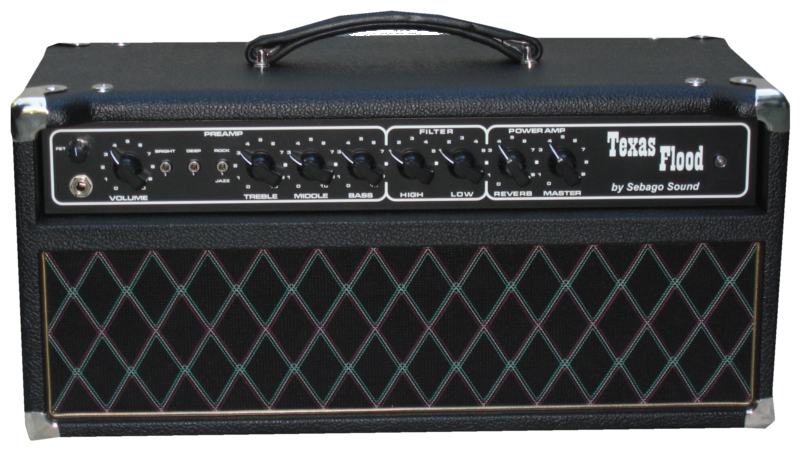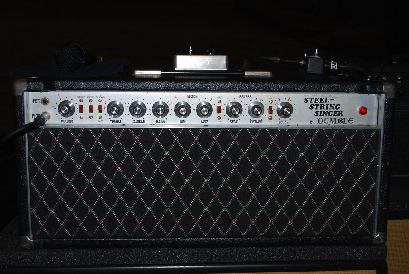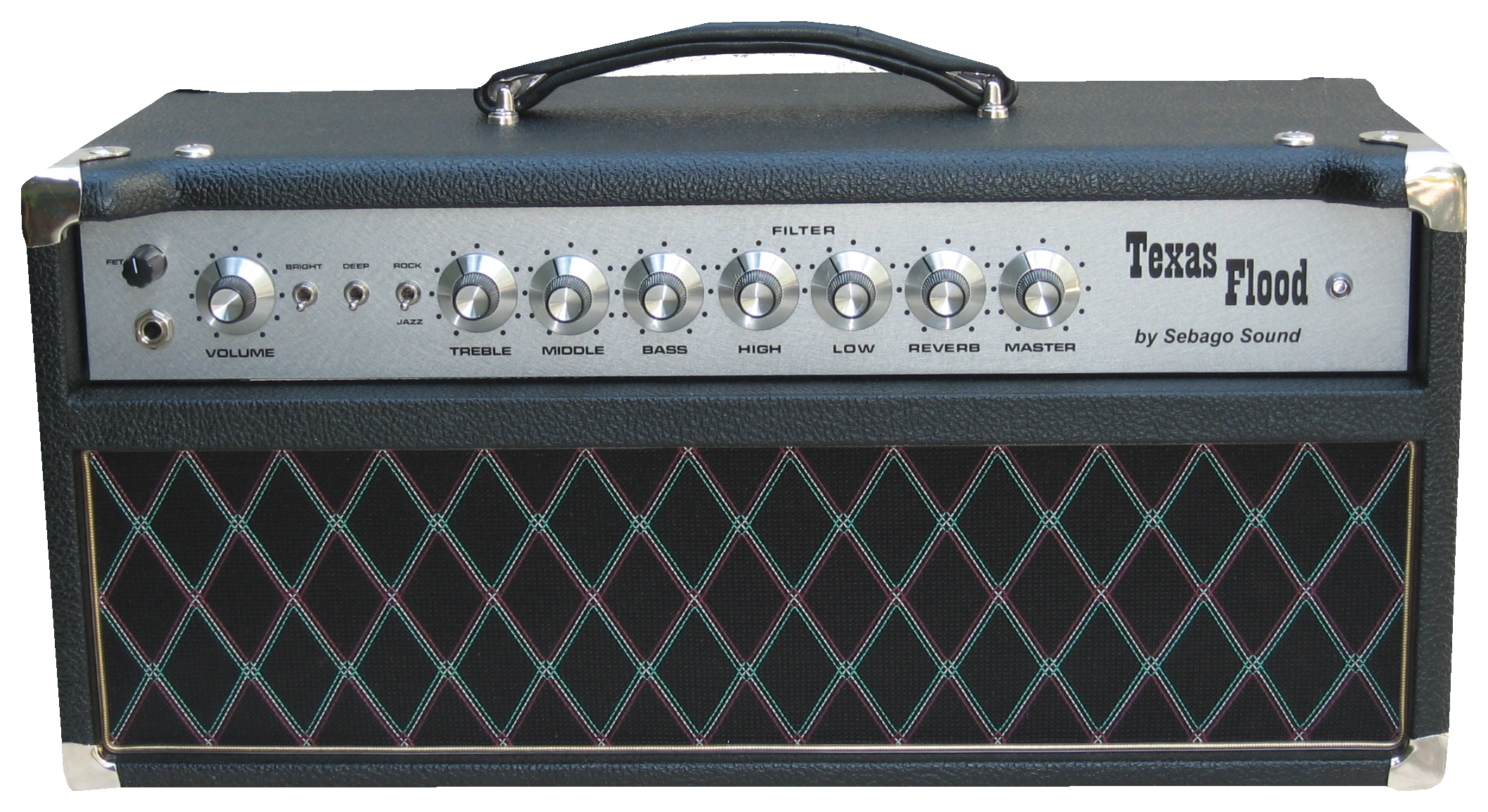The Sebago Sound Texas Flood is here!

Texas Flood - Steel String Singer based head available in 50W or 100W version
Here are some clips of various folks playing the Texas Flood amplifier.

The Sebago Sound Texas Flood is based on an early silver face Dumble Steel String Singer model serial number #002 currently owned by a Grammy winning blues/pop artist John Mayer. The Texas Flood is the only amp on the market right now built using this circuit. This most special amp was previously owned by a Japanese luthier and owner of Fullmoon Guitars, who is also the authorized Sebago Sound distributor for Japan! The amp has 4x6L6 power tubes, a power amp cathode follower driver circuit, unique SSS reverb send and return mixer circuits, and the inductive high/low step filter circuits. The power amp driver circuit was originally found in Ampeg SVT Bass amps and gives this version of the SSS an incredible low end punch and enormous amount of headroom. The reverb is other-worldly, as is the rich second-order harmonic content (it's not really "distortion") the circuit produces gives this amp a special vibe. It is absolutely wonderful sounding, both by itself and wtih almost any pedal you put in front of it. Since the majority of the harmonic content is coming from the preamp, the amp has a very consistent feel and tone over a very wide volume range. From bedroom to stage levels you'll get a very warm, rich, singing tone that can be dialed from super clean to very warm and slightly overdriven. The tone and feel of this amp is not something that is easy to describe, it simply must be played to be understood.
While no two SSS amps are the same, they do share some important circuit topologies that give them their very special vibe, and this amp is no exception. There are circuit topologies in this amp that simply do not exist in any other guitar amplifier - multi-stage feedback loops, inductive step filters, and cathode follower mixer stages for the reverb/dry signal mixing. Our amp is a faithful reproduction of the real thing, based on very detailed information that is not widely known nor simple to reverse engineer. There are very few amps this close to the real thing, and none abailable at the price of the Sebago. Component selection and layout play a big part in the performance of a high powered tube amplifer, especially a "clean" amplifier. Poor components, substandard power and output transformers, inferior bypass caps and improper layout will cause an amp to be harsh, "fart out" when pushed, and lead to intermodulation distortion which will lead to ghost notes and make chords sound out of tune. They may sound fine at lower volumes and when playing single note lines, but for the type of heavy duty playing these amps were made for they will not hold up to the punishment. Don't be tempted by the lower price options out there, there is a big difference in performance that is worth paying a bit extra for.
This video requires the free Flash plugin.
The layout of the Sebago Texas Flood amp is a bit different than the real thing. We wanted to keep the width the same as our Double Trouble heads so they would fit on top of the standard 1x12 and 2x12 speaker cabs, and not be too much trouble to transport. The original SSS amps were very wide and heavy and really only fit well on top of a 4x12 cabinet.
The original amp had two inputs, one "normal" input and one "FET" input. The normal input goes straight to the first tube gain stage. The FET input goes through a small "Field Effect Transistor" gain stage similar to a clean boost before hitting the first tube gain stage. This input works very well with the SSS amps if you want some extra overdrive from the preamp. The oringinal had the "volume" control for the FET input inside the amp, so it could not be adjusted on the fly. As an option we offer the FET control on a push-pull switch just above the input, and the FET volume/gain can be adjusted with this knob. It can also be switched on and off via a footswitch.
The Secret Weapon of the SSS amps are the High and Low step fliters, which can be used to dial a wide range of tones. Each filter has six settings. They work in conjunction with the normal tone controls to create a very broad pallete of sonic options. The Bass Filter is very useful for taming a boomy speaker cabinet or room, or adding a big fat low end to a Stratocaster. Once you set the step filter you can fine tune the low end with the standard Bass tone control. With the High filter you can go from mild to wild glassy top end on your tone, and again fine tune the color with the treble and mid tone controls. If you can hear it in your head, there's a good change you can dial the Texas Flood to deliver it.
The reverb send knob is on the back to save a little extra space on the front panel. The reverb send gain is typically used to keep from overdriving the spring reverb tank and causing it to be too flubby or boingy. Once you have the reverb effect sounding the way you want with the send contol, then the front panel reverb return control can be used to set the overall reverb level. It is a very versitile and natural sounding implementation, as good as any studio reverb unit out there and a big improvement over the standard Fender Twin circuit used in almost every other amp. The amp has passive FX loop with the Send and Return jacks on the back.
Please inquire using the contact page if you have any questions or would like to place an order.












